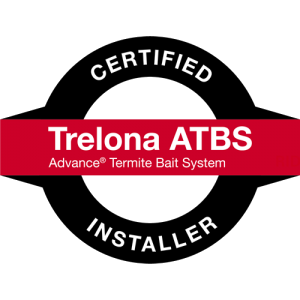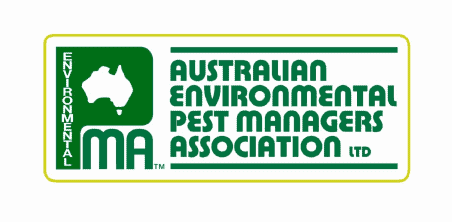Every single day, we pesties will hear a misleading or downright incorrect statement about termites. And more often than not, it is a homeowner explaining why their home is safe from termites. And unfortunately for some, they will learn the hard way that not only were they misinformed, but they are now up for tens of thousands of dollars worth of damage, or worst case - their home must be demolished (yes, it happens). And with over ten years in the industry, I’ve heard the lot - starting with the title of this blog - ‘White ants’ Most modern pesties bristle at the term white ants, and will jump at the opportunity to tell you “Actually! Termites aren’t ants at all, they are actually more closely related to cockroaches while ants are actually more closely related to wasps, actually!” So there is Myth number 1: Termites are ‘white ants’ - Busted! ❌🐜
Myth number 2: “My house is made of hardwood, so it’s safe from termites.”
This is one of the most common ones we get, to which I say - some people prefer their steaks well done, it just takes them a bit more chewin’. The actual fact is, many termite genuses prefer hardwood, it just looks like they prefer the softer stuff because it goes a bit quicker.
It seems logical, and it often comes hand in hand with “the house is over 100 years old, and it’s still standing”. But termites have one job, and one job only: Turn dead trees into dirt, and they do it bloody well. They don’t take days off, call in sick or go on holiday. 24 hours a day, 7 days a week, they are chipping away at that hardwood bearer in the roof. Hardwood trees die, they fall over. How many 200-year-old logs do you think there are lying intact in the bush? I haven’t counted but my guess is none - and a house is nothing if not a big pile of dead trees. Busted! ❌🐜
“Myth number 2: Termite damage is covered by insurance.”
This isn’t something I actually hear all that often, but I do see the surprise on many customer’s faces when they hear this fact, so I feel it deserves to be on the list. There is no insurer in Australia (that I’m aware of) that covers termite damage, and many, many, many more homes are damaged by termites than fire or flood - I see them every single day. But there is good news! There are steps you can take to protect your home, many of which you can do yourself. Part of a timber pest inspection (other than early detection of termites) is to identify conducive conditions, and advise you on steps you can take to lower the risk. Often, these are minor and sometimes free changes that you can make, that significantly lower your risk.
There are also Termite Management Systems (TMS) you can have installed to significantly reduce the risk. You have probably heard the term ‘termite barrier’ before, which is the most common type of system, now called a chemical treatment or a treated zone. Without insurance being an option to safeguard your biggest investment, this is the next best thing. The treatments provide 8 years of protection, and with the average-sized home costing around the $4000 mark, that works out at only $500 a year.
On top of this protection, as we are accredited installers of Termidor, you are eligible to apply for the Termidor $2 Million Dollar Warranty, covering up to $2 million in damages, should termites gain entry to your home after installing a current Termidor treated zone. Busted! ❌🐜
Myth number 3: “There’s termites in the woodpile in the backyard - but while they’re eating that, they aren’t eating the house.”
Another good one. I have actually had a customer tell me they intentionally put timber in the yard for the termites to eat, to protect their home!
I won’t spend long on this one. If you surround your home with any food source for any pest, you increase the populations and the pressure on the home. It’s like throwing your food scraps in the yard to keep the rats away. It’s like saying “my fence is on fire, but I figure as long as the fence is burning the house is safe!” Nah, put the fire out, and clean the leaves out of your gutter. Have regular termite inspections, treat the termites, protect the home, and listen to the advice of your pestie. Busted! ❌🐜
Myth number 4: “There’s no termites here - I keep a pretty good eye out.”
Termites by nature are discreet. And unless a professional with a trained eye spends a dedicated 1-2 hours specifically looking for termites, the chances for early detection are extremely slim and you won’t notice anything until there is significant damage and your hand goes through a door frame doing the spring cleaning.
Us humans can be quite unobservant. Without looking, what color is the t-shirt hanging up in your wardrobe third from the left? You probably open that wardrobe every day and I’m tipping you have no idea - because I can’t answer that about my own! I have seen houses with damage in every room of the house, the roof, the lot. The homeowners were none the wiser, and often a visiting friend or family member spots the damage first. I have seen the same story play over and over again, sometimes with an entry point skinnier than my pinky, hidden behind a downpipe, or sometimes not to be found at all. Are you seeing a trend here? Have regular inspections, install a TMS and call your pestie. Busted! ❌🐜
Myth number 5: “I have cypress mulch or wood chips so I won’t have termites.”
There is a sliver of truth in this, termites generally don’t prefer cypress and it is considered termite resistant. But! At the end of the day, mulch is mulch, its entire purpose is to retain moisture - and as we all know, termites and moisture go hand in hand.
I have heard tales of cypress wood chips releasing their oils into the soil and deterring termites - and it is just not true - I’ve seen plenty of cases where termites are having a real party in amongst cypress - they just don’t really like to eat the stuff. So by all means, it is a good option for gardens, but do not rely on it to keep termites out from your home - you’re better off relying on hopes and dreams, or better yet, regular inspections and a TMS! Busted! ❌🐜
Myth number 6: “Termite barriers (chemical treatments) look ugly, and if I ever go to sell, prospective buyers will assume I have had termites.”
We have all seen the houses where drill holes are all over the place, tiles are cracked, concrete is blown out, and the list goes on. Yep, that looks crap. And there are some cowboys out there. But also, keep in mind some of those treatments may have been done 15 years ago, and the industry has come a long way in that time as far as products, training, and standards go.
We pride ourselves on not just protecting your home, but leaving it looking just as good as it did before we showed up. Sometimes, a 12mm drill hole and a plastic plug is the right choice, sometimes it’s a 6mm drill hole in the corner of a grout line between tiles which is then patched with mortar, sometimes it’s a diamond tip core cutter through a tile prior to drilling, and then color matching the patching with oxides or colored grout, or sometimes it’s silicon and a pebble (my favorite, effectively invisible in exposed aggregate if done properly) but it is always done professionally, neat, with pride, and most of importantly - discussed with you prior.
Having a TMS installed won’t scare off buyers, it will actually do the opposite. In Southeast Queensland, any house without a current and complete TMS in place is automatically flagged as EXTREMELY HIGH RISK. Now, that looks scary on a pre-purchase timber pest inspection report. And it is often used as a bargaining tool during the process.
But if you are still worried, our termite inspections come with a detailed report. If there is no historical or current termite issue at the time of inspection, our report will say just that. You can show these reports to any potential buyers to show that the house is termite-free, and that you proactively have taken steps to look after it. Think of it like a service log book for a car. So once again - your best bet is to install a TMS, and if you want it done right, use Conquer Termites. Busted! ❌🐜
Myth number 7: ANY OTHER REASON AS TO WHY TERMITE MANAGEMENT ISN’T REQUIRED!
The fact of the matter is, we live in a sub-tropical climate, and termites are a very real and present threat that all of us face, regardless of the type of home, garden, fence, or whatever else you may have. Here’s a couple of quick-fire myths to finish up on.
Concrete against the house = safe: Nope, moisture runs off the edge, termites happily skate around under footpaths, come up the joint between the path and the house, or gain entry over the edge of the footing (usually underground).
Brick/cypress/steel frame homes = safe: Nope, in the case of cypress and steel frames - sure, the house may not fall over. But how about the cupboards and cabinets, gyprock (yes, they damage this too, some genuses in particular are notorious for it - heterotermes and microcerotermes come to mind), skirtings, door frames, window frames, floorings, there is plenty to eat. And brick veneer homes actually form a very large part of our work and are very susceptible, and can often be the trickiest as usually the entry point is where the bricks sit on the footing, which is generally underground. And of course, there is the timber frame behind the brickwork which is quite often pine and gets chomped pretty quick. So what’s the answer? Have regular termite inspections and install a - okay, I think you’ve got the point! Busted! ❌🐜










